Mark Sealey, 2018-06-22
Steinberg Media Technologies GmbH
A major new version of Steinberg’s advanced music notation software Dorico was released last month.
Dorico Pro 2 is a superb product in every way. It so demonstrably continues the substantial success of the already excellent Dorico 1 that no current or prospective user should hesitate to buy this upgrade.
The claim that Dorico represents the future of music notation is not exaggerated. Yet – given Dorico Pro 2’s comprehensive functionality, flexibility, elegance, and stability – that “future†is really already here.
This review (based on almost daily use of Dorico since its release in 2016 and now a thorough exploration of the upgrade) first assesses the direction taken by the product; looks at Dorico Pro 2’s evolution; examines the strengths of what’s new in this release (pdf), which – significantly – include beta integration with Wallander Software’s outstanding NotePerformer 3; and visits the new entry level product, Dorico Elements 2.
You can upgrade to the renamed Dorico Pro 2 for a modest $99.99, which is the same cost as Dorico Elements. Or cross-grade from Sibelius or Finale at a 47% (73% for education) discount. The full version of Dorico Pro 2 costs $559.99. This is comparable with (actually 7% less than) the full cost of Sibelius and Finale. There is no subscription model for Dorico. There is a full pricing table at the end of this review.
Intelligence
Dorico Pro 2 represents the most intelligent, easy to use, efficient – and so the most musically effective – scoring system now available. Indeed, it’s marketed as “AI for musicâ€. Instead of asking musicians to adapt their ideas to the working of computers… however advanced they may be, Dorico “thinks†as musicians think. Then instantly translates what they write into a robust and flexible digital format for further editing, sharing and engraving. The end result has scarcely a hint that manuscript paper has been exchanged for keyboard and mouse.
The Dorico ideal has always been to let composers and arrangers focus on the music without having to stop to plan or decide ahead which settings and parameters they may need. And without having to worry about which compromises they may have to settle for.
As musical ideas change, Dorico adjusts and takes care of the practicalities with musically watertight algorithms of its own. These can all, of course, be overridden if desired; and/or tweaked manually.
In the vast majority of cases, compromise is avoided altogether in Dorico: from the start it’s been a fully-fledged, advanced, versatile and comprehensive, industry-strength piece of software. Its behind-the-scenes ‘adjustments’ are informed by the experience and wisdom of a range of accomplished expert musicians; they know how notation really works. So – significantly – computer science and its limitations (for instance, the order in which certain things have to happen) is silently submerged underneath Dorico’s musical intelligence.
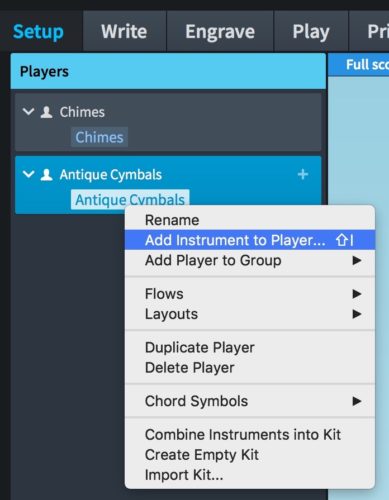
Take, for example, the way instruments are assigned to players. Until Dorico, if you wanted to re-assign either, you would have to copy and paste material from and into (different) tracks. Dorico Pro 2’s intelligent staff management makes such an at times convoluted process obsolete. Instead, simply adjust existing Players’ instruments (say the subsets of the drum kits in use) with a couple of clicks. This is possible thanks to the basic model adopted by Dorico from the start which sets Players as the fundamental unit responsible for a staff’s content – not instruments.
Dorico knows how to redistribute note values throughout a bar/measure; and how to sequence notes and rests according to the way(s) in which players expect to see the score. So you can enter the notes “at willâ€. Follow you ear; stick to the durations and patterns which you hear; don’t concern yourself yet with having to plan time signatures, bar lengths or even a key signature.
Dorico uses its own sophisticated logic to place, group and rationalize what you’ve written. It’s not necessary to calculate, shuffle and re-allot arithmetical fractions to “help†the computer to get it right. When you’re happy, Dorico then produces stunningly attractive printed scores. These have been known to evoke gasps from musicians unfamiliar with this, one of many aspects for which the software is becoming increasingly renown.
Dorico Pro 2 takes this intelligence further. It works in parallel with you. For example, when you need extra staves to accommodate divisi scoring (the instruction to, usually temporarily, divide a single section of instruments, often strings, into multiple subsections), Dorico Pro 2 will automatically create the staves for you; together with a variety of naming and labelling options, over which you have full control.
Easy to Use
The superficial impression is that Dorico is (just) “more user-friendly†than other software. And that’s true. It is.
But that’s not all. Looking more closely, users soon see the advantages of software that’s been built afresh by a team with a hundred years’ experience (mostly on Sibelius) between them. But that’s not all either.
Dorico’s development team had the luxury of being able to work from the ground up with an entirely new codebase; yet has the advantage of being able to draw on the wholly owned subsidiary of Yamaha, Steinberg’s, vast expertise in the world of advanced audio soft- and hardware.Â
But that’s still not all: that same team also draws on the advice and experience of leading engravers and music publishers, as well as industry experts in such fields as video codecs (new in Dorico Pro 2); and the special requirements of the education world (one of Dorico’s core markets). And on the highly exacting demands of practicing musicians using the software for mission-critical and deadline-driven projects which require readable, durable and visually pleasing engraved published scores.
No matter how easy it can be made to seem, musical performance is stressful. The more a score can help players, the better – by leading the eye, by banishing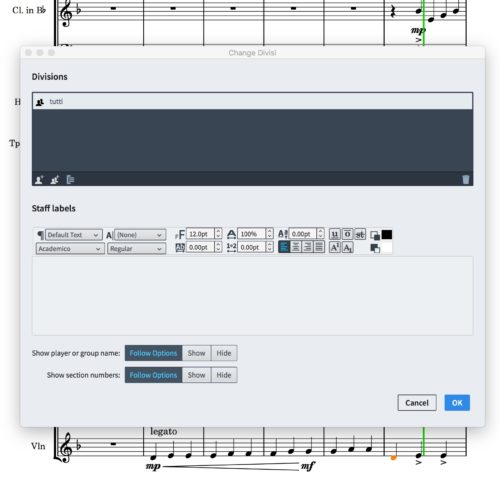 ambiguity and confusion and so on. Take divisi again. This divides an orchestral section’s parts in such a way that they play different material. But how do you avoid confusion if that direction occurs part of the way through a ‘System’? Dorico Pro 2 inserts extra staves (‘ghost’ staves, if you like) before the split from Unison scoring. These amount to duplicate bars. That way the musicians in the section whose material is about to be divided are not caught off guard; they are eased into the division. Who plans and writes the identical passage in that Unison section? Does the composer have to copy and paste it? Of course not. Dorico Pro 2 takes care of it all automatically, seamlessly and silently.
ambiguity and confusion and so on. Take divisi again. This divides an orchestral section’s parts in such a way that they play different material. But how do you avoid confusion if that direction occurs part of the way through a ‘System’? Dorico Pro 2 inserts extra staves (‘ghost’ staves, if you like) before the split from Unison scoring. These amount to duplicate bars. That way the musicians in the section whose material is about to be divided are not caught off guard; they are eased into the division. Who plans and writes the identical passage in that Unison section? Does the composer have to copy and paste it? Of course not. Dorico Pro 2 takes care of it all automatically, seamlessly and silently.
Journey
When MyMac first looked at Steinberg’s Dorico version 1 in February 2017, it was found to represent an excellent first step on what promised to be a very exciting journey for musicians: composers, arrangers, performers… anyone who wants to score (write, edit, play back) and engrave (‘set’, print and publish) music in almost any environment from orchestral, chamber, opera, vocal, choral, ‘concert’ music through jazz and films to ‘pop’.
But – as Steinberg has always made clear with welcome transparency – some functionality and features were necessarily still to be added; others were, and still are, being streamlined. This is immensely complex software: the two competitor products have reached their own current levels of maturity only after almost 25 years for Sibelius (released in 1993) and 30 years for Finale (1988). Users of Dorico 1 were – in some cases and to some extent – being asked to make a leap of good faith that the team at Steinberg would deliver.
Emphatically, it has. Their faith was well placed. Dorico Pro 2 now looks set to sweep all before it.
You are invited to turn again to that earlier review for the particular circumstances in which the new team at Steinberg – led by the immensely gifted and startlingly tireless product manager, Daniel Spreadbury – seized a perhaps once-in-a-generation opportunity to design, build, test, refine and eventually release Dorico literally from the ground up – after almost four years of development.
And after ensuring that excellent and extensive support structures were in place.
Support
It seems as though at least a couple (sometimes as many as half a dozen) specialists from Steinberg are ready to assist on the lively Dorico forum at most hours of the day or night, almost 365 days a year. Few users’ comments, requests and suggestions seem ever to be ignored. Members of the team often engage in detailed and lengthy dialogs online in this way. The large, well-informed, user base tends to do much of the rest.
One feels that, when the inevitable bugs (though fewer and fewer) crop up, they will be dealt with effectively. It soon becomes obvious that Dorico Pro 2 is managed by, and in the hands of, an extremely skilled software development team whose members are also specialists in music notation, theory and performance, techniques, current developments, audio, OS integration and UI/UX. Above all, they are convinced of the need to work with musicians using software which really understands music as they do.
Surprise
Last month, then, Dorico Pro 2 and the slimmer Dorico Elements 2 were released, actually catching most users by surprise. A new paid upgrade was always expected for 2018. But not so early in the year. But consider just how many new features (pdf) were added between Dorico’s initial launch and the most recent update (v.1.2.10) in February 2018 before this paid upgrade. Such a move – at this affordable price – is entirely justified. Not all new features are in Elements, of course. You are referred to this table for clarification; the bulk of the discussion in the remainder of this review does refer to Dorico Pro 2.
What’s New
The list of new features and functionality in Dorico Pro 2 is a long and impressive one. There are several series of videos, video tutorials and “Hang outs†dealing with all the new features, their significance and use. This is one of the most illustrative. There’s also a new, dedicated website.
At its top level, Dorico Pro 2 (like version 1) is based upon a workflow distributed across these five operations: Setup, Write, Play, Engrave and Print. They are, of course, closely interrelated; as explained in that earlier review.
There are dozens of specific additions and improvements – many of which have been asked for by users. And improvements and streamlining of workflow and arrangement. As well as beta support for the excellent NotePerformer 3. Other new features include rich support for media – particularly video; and added functionality in Play mode and the ways in which the music (eventually) sounds.
Write
Most composers (and arrangers) will spend most of their time in Write mode, which is where most of the new (and improved) features in Dorico Pro 2 are to be found. These innovations can loosely be divided into, on the one hand, such new functionality as applies to and affects entering and editing the music’s actual notes and the techniques with which notes will be played. And on the other hand, those which control their place in the larger score.
Notes
Perhaps the most requested innovation in Dorico Pro 2 overall is the introduction of “slash” and “rhythmic” notation. In some musical genres usually when accompanying, players are invited to improvise a rhythmic pattern in accordance with chord symbols (one of the most important new features in Dorico 1.1 a year ago). One slash is placed on the staff for each beat. As has come to be expected when such new functionality in Dorico is added, the implementation in this version of (such) rhythm section notations combines a rich set of functionality with simplicity, but flair.
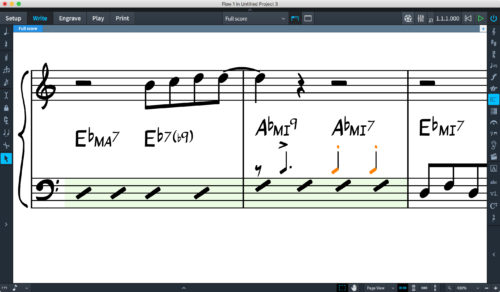
This new type of voice (which can actually be added to any instrument) has a smart and polished look to it. You can simply enter slashes – with or without stems – as needed on a staff. For this you will use either the single slash voice or the new Slash Regions. These can be created in a variety of ways, which include using a key command of your own choosing.
A whole host of operations, options, settings and alternatives can be applied to these Regions (which appear in green). Yet another example of Dorico Pro 2‘s “intelligence” is the way in which a group of bars can be selected like this to be filled with slashes where the meter is (already) “knownâ€. As you work, you need do nothing for Dorico Pro 2 to continue to group correctly for the (current) meter. What’s more, you can not only “convert” any melodic or choral set of notes into slashes; but also copy music as notes from one instrument and have it pasted into another as slashes.
There is a new set of “composer tools” in Dorico Pro 2. These include ways to distribute notes on the clipboard across multiple other staves in your score. Well and flexibly implemented, these “multi-paste”, “explode”, and “reduce” routines will save considerable time for those – arrangers, for instance – working across staves.Â
Existing notes can now be scaled into tuplets of any ratio. Indeed the creation and manipulation fo tuplets (always a little fiddly until you got used to it) has been improved in Dorico Pro 2.
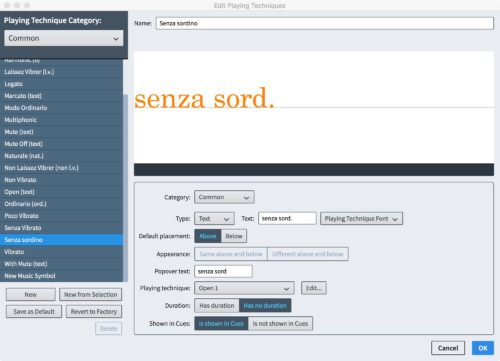 The next group of new features is indicative yet again of ways in which the software is steadily being improved to make life simpler, quicker, for the user. In fact they are taking such “tinker time” away and allowing composers to concentrate on seeing their inspiration through.
The next group of new features is indicative yet again of ways in which the software is steadily being improved to make life simpler, quicker, for the user. In fact they are taking such “tinker time” away and allowing composers to concentrate on seeing their inspiration through.
There is, for instance, now a new dialog to create and edit playing techniques (pizzicato, con sord. etc.) And a new popover (Shift+R) for repeat endings, repeat bars and rhythm slashes. An existing metronome mark can now be changed directly in the Properties region at the bottom of the Dorico window. Two nice added levels of sophistication in Write mode allow dynamics, playing techniques and text items to erase their own “local” backgrounds when they would cover, cross, or otherwise interfere with bar and staff lines. Engrave mode still has seemingly infinitely precise levels of control over positioning; but Erase is useful. And text items can now have a border, whose width and padding can be customized.
Control
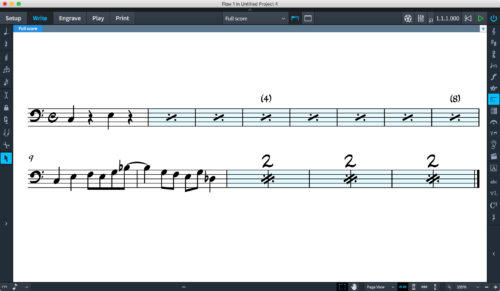
Music is composed of notes, of course, which group together into cells, “gestures”, phrases etc. Control of these is crucial to intelligent composition. Dorico Pro 2 adds new ways in which to control the repetition of a section of music: the new bar repeat symbols (drawn in the middle of the bar) indicate to the performer that they should go back to the preceding fully-notated bar(s) and play it/them again. Now you can easily create and manipulate (edit and extend/reduce) bar repeats – using the mouse to fill bars with bar repeat symbols. Options have been built in to group and number the bars. Repeat structures now play back automatically.
There’s a new System Track to be used – amongst other things – as a way of adding and deleting bars; and to select and copy music. It shows up unobtrusively above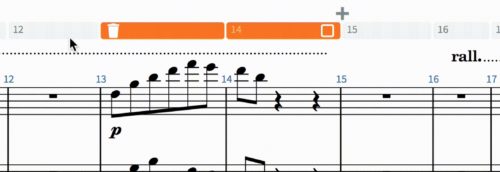 the top staff of the system, and “knows” when you need it to come forward. This saves significant amounts of time… you can now perform the same operation on multiple staves at once.
the top staff of the system, and “knows” when you need it to come forward. This saves significant amounts of time… you can now perform the same operation on multiple staves at once.
Earlier in this review the newly-introduced divisi structure was referred to. That is perhaps the most prominent example of the advanced staff management tools introduced in Dorico Pro 2. Staves can be added or removed from other instruments than the strings more easily now as well. More complex music often makes use of alternatives, ornamentations and other variations. These are known as ossias and can be accomplished quickly and simply in this version of Dorico. As can getting the layout on the score just as you want it with other instruments which have more intricate such demands.
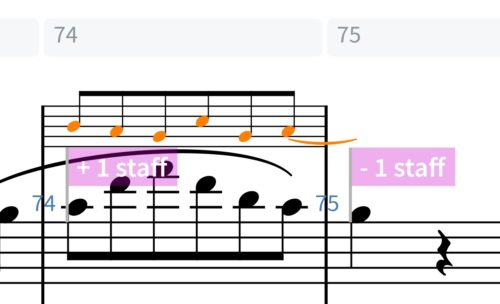 In some contexts – typically “Hollywood-style” scores and parts – large time signatures are found centered on every bracket. Such an option has been introduced in Dorico Pro 2… they can use the traditional bold serif numerals, a narrower version of these, or the tall thin sans serifs. Time signatures can now also be placed above the staff; you can set their size, position, and typeface.
In some contexts – typically “Hollywood-style” scores and parts – large time signatures are found centered on every bracket. Such an option has been introduced in Dorico Pro 2… they can use the traditional bold serif numerals, a narrower version of these, or the tall thin sans serifs. Time signatures can now also be placed above the staff; you can set their size, position, and typeface.
On top of that, the software – as always – offers a remarkable number of different combinations of appearance and engraving options for these large time signatures’ settings… they can be set by Player, by family of players, by staff(s) and by the number of staves, by part, by score, by project, by Layout and so on. Yet another example of Dorico’s passion for flexibility in the interests of compositional consistency and refinement.
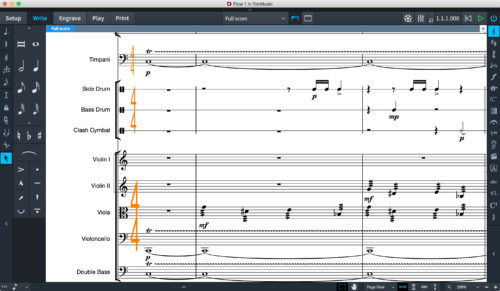
Dorico Pro 2 has a new, second, font family in addition to the familiar default Bravura. Petaluma was inspired by a handwriting-like style typeface in a series of jazz standards books; it has over 1,350 musical symbols, and upwards of 500 alphanumeric characters.
It’s now possible to change the clef used by an instrument in concert and transposing pitch; and to Ctrl-click to restore the default value of a volume fader or pan control.
NotePerformer 3
Price: $129
requires:Â macOS 10.6 or higher;Â Dorico Pro 2/Dorico Elements, or higher;Â 1.5 GB hard drive space;Â 4 GB RAM or more;Â Intel Core™ 2 Duo, 2.0 GHz, or faster

“Midiot†was a rather cruel neologism adopted by some musicians who derided the dependence of those of us who relied on digital technology to compose and play music back. This was not always without justification. Like it or not, no computer – at least not yet, in the second decade of the twenty-first century – is ever going to sound as natural and fluid as do living musicians. String sometimes squeak. Horns habitually honk. Pianos periodically ping.
But both the sampled and synthesized sounds that come bundled with notation packages like Dorico have got better and better. With Dorico Pro 2 Steinberg includes over 1,300 Virtual Instrument (VIs) sounds from the HALion Symphonic Orchestra library and HALion Sonic SE 3; these are marginally better than those of HALion SE 2. Â
But they’re not so polished or precise, life-like or “genuine†as those VIs of, say, the Vienna Symphonic Library (VSL), the “Rolls Royce†of sampled symphonic instruments. What’s more, although such VST3 VIs have a much simpler installation and and set up process in Dorico than they do in Sibelius, a considerable amount of tweaking almost inevitably still needs to be done (with Expression Maps and to other parameters which control audio output itself) to get the best results.
There is another approach.
This is Wallander Software’s NotePerformer. First released in 2013 for Sibelius, this very affordable ($129) alternative aims to bridge the gap and get the best of both worlds. Integration between Dorico 2 and NotePerformer 3 is tight, yet almost effortless to achieve: just install NotePerformer 3 and select it in the Playback Template in the Play Menu and your scores will now take advantage of the superior sounds of NotePerformer 3.
In an interview in the excellent Scoring Notes blog NotePerformer’s originator and energetic developer, Arne Wallander, described the software’s strengths and positioning in the world of notation software both succinctly and honestly: “You write musical notation, and can hear it played back, with accurate phrasing and dynamics. It doesn’t need to be perfect, but it needs to be accurate enough so that you can use playback to improve your own skills and refine your scores.â€
Yes. This will satisfy many composers who don’t have daily access to a symphony orchestra. It uses what Wallander Software also terms Artificial Intelligence to look at the notes in your score in context, and cleverly adjust its sound output accordingly.
By and large, each of even the best sampled sounds (e.g. from VSL) will be heard as identical every time it’s played. A piano (and other keyboard instruments) will do quite well because their strings are struck or plucked, and that’s it. But the instruments in other families (strings, woodwind, brass) differ. Their dynamics (the “force†applied) change according to context… what came before, what comes next, note duration, tempo, changes in tempo; even what else is sounding at the same time. Dynamics can even change during a note’s production.
In fact every single note in one musical phrase may have dynamics which differ – both from every other note, and from the very next time when it is played again – although the pitches may be identical. That’s how humans do and should play in serious music.
Indeed, the subtleties of this “phrasing†constitute a large part of their musicianship. Such intangible skills – extreme sensitivity to the music’s slightest nuance – take decades to acquire, which must be the reason why all musicians have invariably been paid such huge salaries, and appreciated by governments and all official bodies; and usually offered heavily-subsidized accommodation throughout the world, mustn’t it.
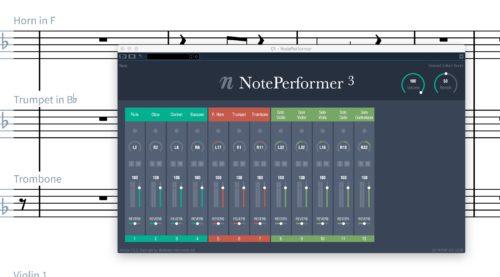
Complex and sophisticated algorithms in NotePerformer (3) are aware of this active variability in note production and performance. They instantly adjust the attack, sustain and decay envelope of each sound to render it more human, more plausible, more credible, more natural. Less mechanical. Altogether better as sound.
As this video on the NotePerformer site (also a good source of examples of NotePerformer in practice) explains, no matter how good, how meticulously, even the best sound was sampled, its parameters for pitch, dynamics, vibrato, timbre etc cannot change; the same “clip†is slotted in each time.
NotePerformer 3, on the other hand, is aware of the context, the sequences and the ways in which a score is controlled, the directions it takes. The software adjusts the sounds of the notes produced accordingly – in real time – as they are played back. A much more natural, freer and musical “performance†results.
Exactly how this is achieved from a programming point of view is outside the scope of this review. It is essentially a blend of the aforementioned algorithms and the inclusion of multiple parameters as they have been extracted from many hundreds of existing scores by established composers, whose styles have contributed to the corpus of accepted great music.
NotePerformer 3 uses its own sample library. Amazingly, though, its footprint in terms of file size is small; it’s simple to install; it’s stable; and – as said – integrates transparently with Dorico Pro 2 (as well, for that matter as Sibelius and Finale). It can be thought of as “taking over†from Dorico Pro 2’s own Mixer and outputting its own natural, pleasing and musically more expressive sounds, as you work.
At the same time as Dorico Pro 2 was released, NotePerformer – by now the industry standard – was updated to version 3. (Amazingly, it was a free update – as was that from 1 to 2 before it; it’s the same price now as it was five years ago.)
In the period during which Dorico Pro 2 was evaluated for MyMac, NotePerformer 3 worked flawlessly in the areas in which it was expected to, and which are already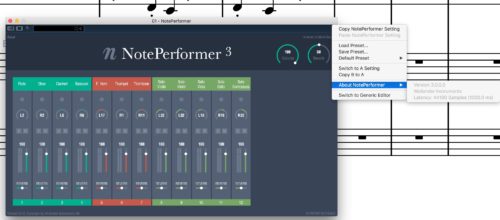 claimed to work. The sounds as played were found to be excellent; the strings are the weakest; but, in compensation, NotePerformer 3 has some articulations (e.g. brass mutes) which HALion 3 still lacks, or which require additional configuration. The ease of using NotePerformer 3, once set up, is equally high. Both Wallander and Steinberg make it plain that this is a beta implementation; and there are several features not yet working. But the two teams are in constant touch – so it’s reasonable to assume that it’s only matter of time before these will be working fully.
claimed to work. The sounds as played were found to be excellent; the strings are the weakest; but, in compensation, NotePerformer 3 has some articulations (e.g. brass mutes) which HALion 3 still lacks, or which require additional configuration. The ease of using NotePerformer 3, once set up, is equally high. Both Wallander and Steinberg make it plain that this is a beta implementation; and there are several features not yet working. But the two teams are in constant touch – so it’s reasonable to assume that it’s only matter of time before these will be working fully.
So if you want to avoid MIDI programming and the not insignificant expense of high-end VIs, and experiment with what looks like a handy compromise – but is in fact a huge step forward – the newly-possible combination of Dorico 2 and NotePerformer 3 is very well worth investigating. It’s not expensive, can be downloaded for a 30 day trial and has excellent (technical) support.
Media
Dorico was designed for – and has always appealed to – musicians working in most genres of music. Dorico Pro 2, though, has major enhancements for composers, arrangers, orchestrators and copyists working in film, TV, video games, and other production environments. Significantly, you can now compose to picture using Steinberg’s same established and powerful video engine (also recently updated) as is found in Cubase and Nuendo.
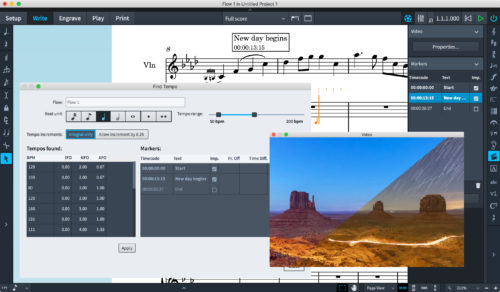
Now in Dorico Pro 2 you can attach a video to your project; play it back in its own video window with thumbnails in Play mode; set markers at precise points in the video which appear in the score itself; then use the tools new to this release to arrive at the best tempo for the material. Analogously, it’s now possible graphically to fine tune timing and MIDI controllers: the tempo automation controls line your markers up with beats.
Play
Play Mode in Dorico Pro 2 still looks very different from the other modes – as it did in Dorico 1. Play mode has, though, been quietly updated and refined. Functionality has been added almost since the first release. It shares the appearance of a conventional piano-roll sequencer from a familiar Digital Audio Workstation.
But as a resource like this shows, it’s closely integrated into Dorico. Not least because operations can be performed in Play mode and fed back (‘round trip’-like) into the score as worked on in Write mode.
There are several new features in Dorico Pro 2 which are likely to be of greater appeal to those who want to sculpt the audio of their scores. You can now, for example, edit graphically both the tempo and dynamics (‘velocity’, volume) of what you write – directly in Play mode. To be able to adjust the curves describing these parameters and plotted by default affords you much finer and more nuanced control over your sound. More gradual (and so probably often more natural) changes can be applied; and – if you know what you are doing – your score can be made to sound more as though it has the less mechanical attack, sustain and decay which ’real’ (human) players produce.
A new ‘Line’ tool found immediately under the already familiar ‘Draw’ tool constrains changes in tempo curves, as you would expect.
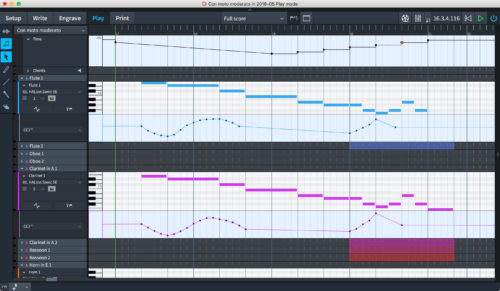
The basis of sound production in Dorico (as in most other such programs) is, of course, MIDI – surely one of the longest surviving protocols still is use… it was developed in the early 1980s. Dorico Pro 2 allows you to work in new continuous controller lanes for MIDI and select the CC (MIDI Control Change) number to work on; these are reached by expanding each Player’s disclosure triangle. Be careful to avoid those MIDI numbers already assigned to basics like “pedal†and “note-offâ€, though.
At one of music’s many cutting edges is microtonality. Unlikely to be something with which everyone using Dorico Pro 2 will want to work with, support nevertheless has been added for microtonal accidentals (selecting 24-EDO) using VST Note Expression.
Play Mode – that integration again – also now takes advantage of the newly-introduced features in this release which support video (see Media, above): video gets its own track. Markers can also be set (but not (yet?) edited) in a separate track for them immediately above that for video.
Helpfully, audio export (to .mp3 or .wav) now shows percentage completed (a large score can take several minutes) with a standard progress bar.
Elements
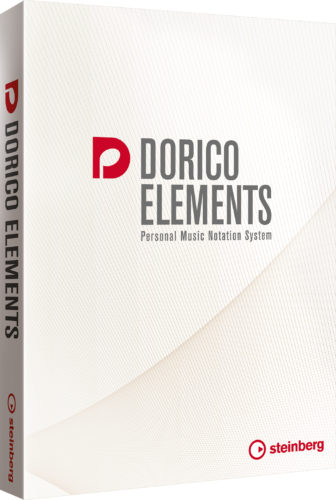
Also a surprise in May this year, when Dorico Pro 2 was released, was a simpler and cheaper ($99.99) entry level version of the program: Dorico Elements. Members of the Steinberg team have acknowledged the inspiration that they have taken more generally with Dorico from Adobe products; the “Elements†tag reflects that.
Users unable or unwilling to commit to the full Dorico Pro 2 package can – in addition to its 30-day trial which is available – buy the Elements entry-level version and evaluate the fuller world of Dorico; Elements is also available for 30 days to try out.Â
Elements’ limitations when compared with Dorico Pro 2 are by no means crippling… it is likely to suit many a professional as well as the beginner and explorer. The biggest constraint is a maximum of a dozen players per score. Others include – but are not restricted to – simpler and/or fewer writing and editing options: single bar number format, fewer clef and chord symbol presets, lack of cues and divisi capability; lack of ossia staves, fanned beams and stemlets; no customizable key signatures; limited octave lines; fewer playing techniques and limited rehearsal marks etc. And for Playback and Engraving: the absence of HALion Symphonic Orchestra and reduced (customization) options.
None of these is likely to prevent serious work using Dorico Elements. Steinberg’s excellent (technical) support; the famed ease of use; the intelligence with which the program automates, adjusts and optimizes input – without depriving you of an override; import and export to other programs (via MusicXML, MIDI, PDF, etc); and VST 3 virtual instrument support. These all come with Elements.
A full comparison of the differences between the two programs can be found here.
Processes and Use
The download, installation and update procedure was always well thought out with Dorico 1. So is the upgrade process for Dorico Pro 2. It’s even possible to run both versions on the same machine.
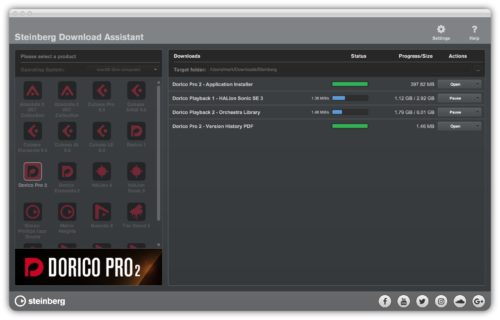 You should first check that you have the latest version of the Steinberg Download Assistant (the SDA), which is currently 1.12.1. This, in turn, is best achieved with the Steinberg Download Assistant Setup utility for the aria2 download manager. Leave the SDA where the Setup utility puts it for best results. It’s also advisable to leave earlier installations of the two HALion packages which came with Dorico 1 in tact. With the new HALion SE3 the combined downloads comprise over 10 GB.
You should first check that you have the latest version of the Steinberg Download Assistant (the SDA), which is currently 1.12.1. This, in turn, is best achieved with the Steinberg Download Assistant Setup utility for the aria2 download manager. Leave the SDA where the Setup utility puts it for best results. It’s also advisable to leave earlier installations of the two HALion packages which came with Dorico 1 in tact. With the new HALion SE3 the combined downloads comprise over 10 GB.
From the moment you launch Dorico Pro 2, things look just that little bit more sophisticated; from the splash screen into the Hub (a kind of local portal to your own work, recent projects, new projects and other helpful resources like the forum), you have the same clear set of options to start a new or open an existing project. More resources are available on the right hand side of the Hub – specifically, links to the excellent video tutorials provided (and regularly updated) by members of the Steinberg team.
As alluded to earlier, this version – which contains many ‘behind-the-scenes’ improvements – is stable and surely has far fewer “anomalies†(aka bugs) than the average software of this complexity and at this stage in its development. Again, as said, those that do come up and are reported – on the forum for example – invariably get acknowledged, presumably logged; and fixed.
Very few now are those (major) musical processes which cannot be accomplished in Dorico Pro 2. Just as sophisticated yet accessible as ever is the disposition of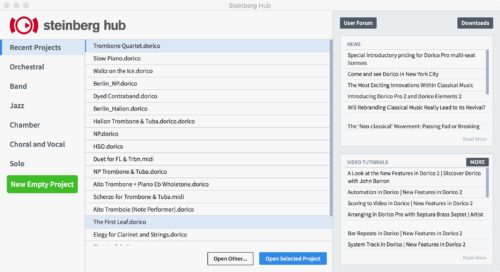 controls, settings, preferences and parameters across menus and tabs; in the Toolbox and Panel, Properties (context sensitive) and Status bar regions of the Dorico screen. Whenever you need something, it always seems to be where you expect it to be.
controls, settings, preferences and parameters across menus and tabs; in the Toolbox and Panel, Properties (context sensitive) and Status bar regions of the Dorico screen. Whenever you need something, it always seems to be where you expect it to be.
Conclusion
This is a major upgrade. It builds on an amazingly solid start (Dorico 1) and does everything it does very well indeed. Although Elements was not tested, there is no reason at all to think that – using the same codebase as Dorico Pro 2 – it would have any such flaws of its own. Dorico Pro 2 performed impeccably during evaluation. Although expectations were high, they were uniformly exceeded. The new features dovetail well with existing capabilities.
Dorico Pro 2 can be heartily recommended to all users. Those unfamiliar with Dorico but interested in exploring a robust but exiting new set of paradigms for serious music composition should also look very closely at what Spreadbury, his team and Steinberg have achieved: it’s very impressive.
Pros: to use Dorico Pro 2 is to feel in control, to wonder how you used to manage without this almost effortless, efficient and effective way to score music. The range of properties, preferences, settings, options, choices and attributes of almost every single aspect of a music score is enormous. Yet the menu, Panels, Toolbar, tabs and other navigational apparatus has all been so intelligently designed – as has the interface in general – that you’re never too many clicks away from accomplishing what you want to.Â
On top of that the documentation (not completely updated for Dorico Pro 2 at the time of this review) is excellent: clear, well-indexed and easy to relate to the intuitive way in which to use the software. The additions in this version are legion, well meet users’ needs and – like everything else in Dorico – are superbly implemented. There is a range of support videos which further clarify how to work productively in Dorico Pro 2. And its range of new features is substantial and expertly conceived and implemented.
Cons: There are still – inevitably – some notation techniques which are missing. All the indications are, though, that this will not remain the case for longer than the team at Steinberg can help. Although the user buys the product knowing this, if you rely on them for mission-critical work, this will be a deterrent.
System requirements: Intel Core i5 or higher. 8GB RAM or more recommended. SSD recommended. macOSX 10.11 or later essential.
MyMac.com Rating: 10 out of 10
Dorico Pro 2 full version: $559.99
Dorico Pro 2 full version (education): $329.99
Dorico Pro 2 update from Dorico 1: $99.99
Dorico Pro 2 cross-grade from Sibelius, Finale: $279.99
Dorico Pro 2 cross-grade (education) from Sibelius, Finale: $159.99
Dorico Elements 2 full version: $99.99
Dorico Elements 2 (education): $66.99

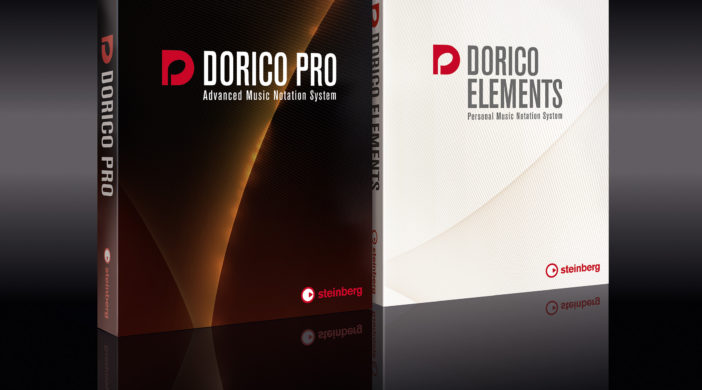
Leave a Reply
You must be logged in to post a comment.